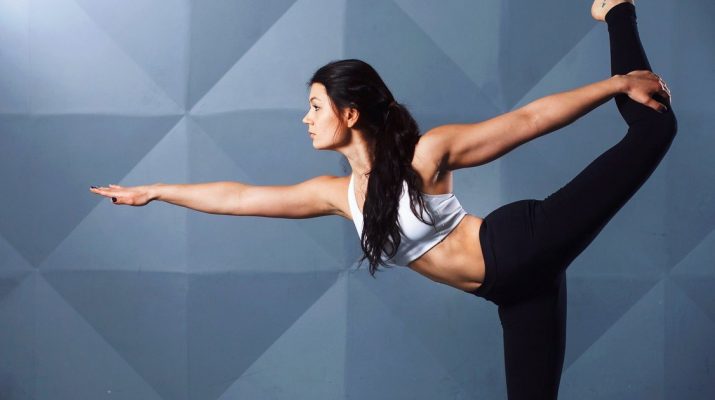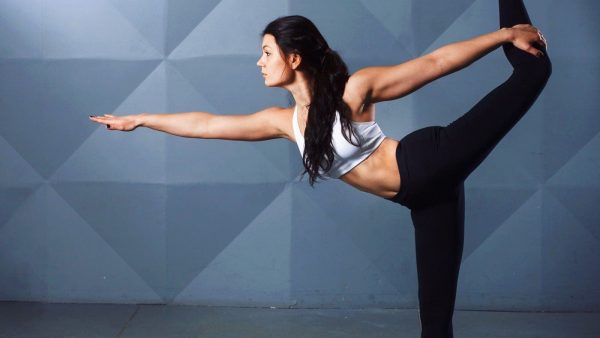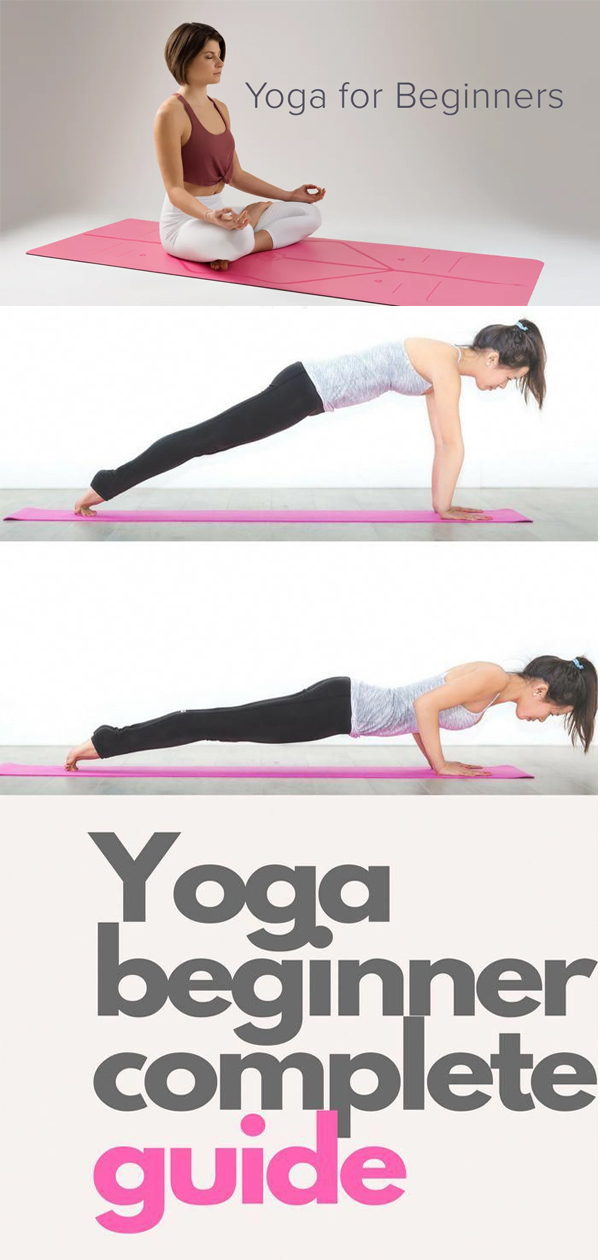Practicing yoga assists in offering a foundation and tools for creating excellent habits like non-attachment, self-inquiry, and discipline. This exercise also provides a way of empowering you to make conscious options to live a fulfilling and healthy life. Yoga is derived from the word yuj, which means better internal states like happiness, peace, and clarity.
Why Start Yoga?
The current culture involves constant stimulation of your nervous and mind systems. Yoga for beginners creates the opportunity for you to decelerate your mind and maintain a sense of balance. According to a 2016 study, 36.7 million people have practiced this meditative exercise; a fifty percent increase since 2012.
Here’s A Complete Guide For Yoga For Beginners To Get You Started:
1. Yoga Assists Your Physical Body
The postures of this exercise can aid to boost balance, mobility, strength, and flexibility. These advantages are the reason athletes include this exercise in an effective cross-training program.
As you do Yoga for beginners, you go through various motions that can counteract poor postural habits and tension. In addition to boosting your body awareness, it lets you correct these imbalances and boost your general athleticism.
2. Reduced Stress And Improved Relaxation
An excellent advantage of Yoga for beginners is the reduction of stress. This is because when stress accumulates, your nervous system can go on overdrive, making it hard to sleep, focus, and unwind. The breathing exercises undertaken can assist in lowering the heart rate and relaxing the nervous system. It also boosts your focus and promotes better sleep.
When it comes to individuals with a deeper spiritual history, its impacts are realized off the mat and beyond the physical. The exercise can aid in linking you more deeply to the sense of awareness and purpose of your current living. As you begin your journey, what you derive out of it can additionally change depending on your requirements.
Getting Started
Yoga is not one exercise that can be done by everybody, but has a variety of exercises for everyone. If you are a beginner, it is ideal to attempt various exercises to figure out the one that is perfect for you. The main types are:
1. Iyengar
This is a mixture of seated and standing postures using props for individuals who need to focus on a range of motion and increase muscular strength, posture, and alignment.
2. Viniyoga
A class that concentrates on meditation and breathing for individuals willing to work meticulously from within or with limited mobility, to experience improved posture, body awareness, and relaxation.
3. Jivanmukti
This is a predetermined sequence which incorporates deep listening, chanting, compassion, and meditation, for persons who need to incorporate ancient teachings and spiritual elements of this exercise in their practice as they gain improving relationships, body awareness, and knowledge of Sanskrit.
4. Hatha
This type of yoga for beginners makes use of breathing techniques and poses to calm and align the body, spirit, and mind as you prepare to meditate. Classes have a slow pace, but it can demand a lot of physical strength to hold the poses.
5. Vinyasa
This type of yoga for beginners is dynamic and may also be called “flow class.” It synchronizes motion with breathing, and you expect your movement to be quicker than in a Hatha class.
6. Ashtanga
Ashtanga takes you through a physically challenging and fast-paced series of poses done in a single order with a great emphasis on breath. Traditional Ashtanga classes do not allow drinking of water and participants can only proceed to the next pose after the previous one has been achieved.
7. Bikram
Bikram is made of twenty-six poses and two breathing techniques repeated in a single order for one and a half hours. It is typically done in a room that is heated to forty degrees Celsius.
8. Kundalini
This type of yoga for beginners consists of repeated movements (that are called kriya), meditation, chanting, dynamic breathing, and mantras. It is believed to have the ability to awaken the energy present at the spine’s base and move it upwards via the chakras.
9. Yin
It consists of poses done for three to five minutes in a seated or lying down position. The lengthened stretches focus on releasing tension and restoring motion range to connective tissue and muscle. It is essential to people suffering from chronic pain, stress, and tight muscles.
10. Restorative
Very relaxed positions are made for at least ten minutes. It consists of numerous props for relaxation and support like straps, bolsters, and blankets. Similar to Yin, it is significant to persons suffering from stress and chronic pain.
Through the various styles of yoga for beginners, self-healing is a consistent and common theme. Whichever style you pick, it will allow you to learn more about yourself to become a better person.
A Guide To Basic Poses
It is crucial to learn some of the basic poses that a majority of the practitioners use. They are simple and can be done from your home. Here are a few:
1. Downward-Facing Dog
Go on your knees and hands. Then make your hands straight and make your upper back relax between your shoulder blades. Maintain bending on your knees, lengthen them, and lift your hips.
The objective is to create the shape of a “V” that is upside down. If your hamstrings are flexible, make your legs straight and push your heels toward the ground as you maintain the spine’s length. In case you see that your spine is curving as you make your legs straight, slightly bend your knees to maintain the length of your spine. Hold the position for five breaths.
2. Cobra
Go down on your tummy and straighten your legs. Make your leg muscles firm and spread your feet to the width of your hips as your toes point behind you. Use the pubic bone to push down to prevent collapsing of the spine’s lower portion. Support your body with your forearms as you pull up your torso from the floor. Ensure you lengthen your neck as you focus straight ahead. Hold the position for five breaths.
3. Warrior 1
Maintain an upright posture and put your right foot back. Have your front foot point straight forward and set your rear foot at an angle of forty-five degrees. Ensure your feet are apart for the width of your hips to enable squaring of your hips to the mat’s front. Bend your body into the front knee. Be sure to have your knee behind or above your ankle.
Maintain strength on your back leg. Put your arms up straight on top of your head and have your shoulders relaxed. Breathe a few times before changing sides.
4. Warrior 2
Maintain an upright posture and have your right foot step back as your front foot points forward. Position the back foot at slightly less than a 90 degree angle. Your front heel should be aligned with your back foot’s arch.
Turn your hips toward the mat’s side. Bend into the front knee to ensure the knee is above or behind the ankle as the kneecap tracks over the middle toe. Maintain strength on your back leg. Put up your arms so that they are parallel with the floor and have your shoulders relaxed. Hold for five breaths before shifting sides.
5. Tree Pose
Maintain an upright posture and move your load onto your left foot, having your left foot’s inner part firmly on the ground. Then have your right knee bent. Lift your right foot and put the sole on the inner left thigh.
Put your hands on the pelvis’s top rim to ensure it’s parallel with the ground. Make your tailbone long toward the ground. Firmly push on the inner left thigh with your right sole and use the outer left leg to resist. Put your hands up straight above the head. Be sure that your shoulders are relaxed. Hold the position for five breaths and shift sides.
6. Seated Forward Fold
Sit on the floor with your lower limbs straight out before you. Bend your knees in case your hamstrings are tight. Flex your feet and point your toes up. Lengthen your spine and sit up tall. Maintain the length of your spine and fold forward as you lead with your chest.
Put your hands on your legs comfortably. Hold the position for five breaths.
7. Bridge Pose
Go on the floor on your back. Spread your feet for the width of your hips as you bend your knees and stack them above your ankles. Put your arms on both sides of your body and place the palms on the ground as you widen your fingers. Lengthen your tailbone’s skin toward your mat’s front. Lift your hips and hold the position for five breaths.
8. Supine Twist
Lie with your back on the floor. Hug your knees in toward you as you lift your feet off the floor. Put your upper limbs in a “T” pose as your palms face the ceiling. Allow your knees to go down on the mat’s right side. Maintain an upward or opposite gaze as you drop your knees. Hold the position for five breaths before shifting sides.
Conclusion
If you want to have mental, physical, and spiritual improvements, yoga for beginners is perfect for you. It will offer you these benefits and more.



